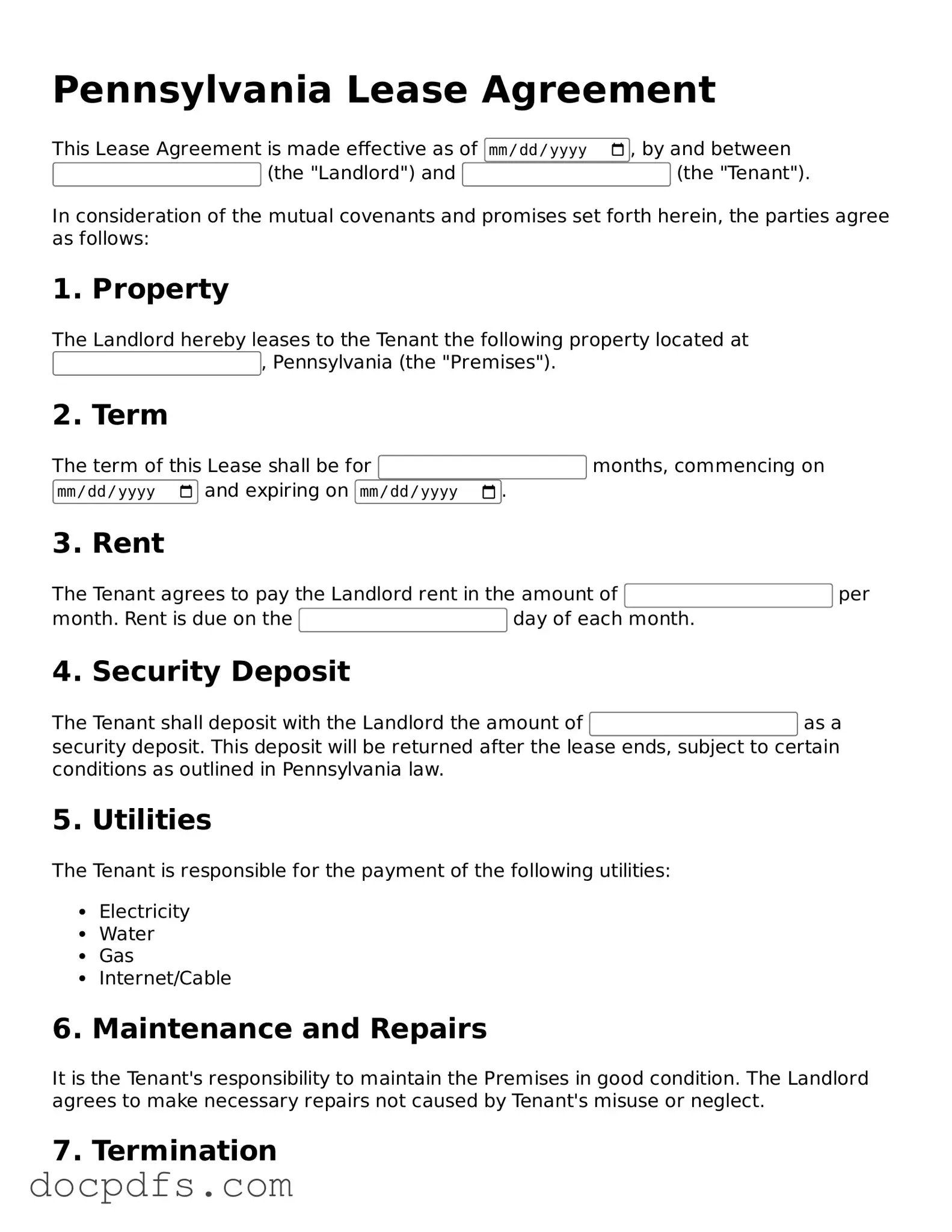A Pennsylvania Lease Agreement form is a legal document that outlines the terms and conditions between a landlord and tenant for renting a residential property in Pennsylvania. This document serves as a binding contract that details the rights and responsibilities of both parties during the lease term.
What key elements should be included in a Pennsylvania Lease Agreement?
When creating a Pennsylvania Lease Agreement, it is essential to include the following key elements:
-
Names of the Parties:
Clearly state the full names of the landlord and tenant.
-
Property Description:
Provide a detailed description of the rental property, including the address.
-
Lease Term:
Specify the duration of the lease, whether it is month-to-month or for a fixed term.
-
Rent Amount:
Clearly indicate the monthly rent amount and the due date for payment.
-
Security Deposit:
Outline the amount of the security deposit and the conditions for its return.
-
Utilities:
State which utilities are included in the rent and which are the tenant’s responsibility.
-
Rules and Regulations:
Include any specific rules regarding the use of the property, such as pet policies or noise restrictions.
How is the security deposit handled in Pennsylvania?
In Pennsylvania, landlords can collect a security deposit, typically equal to one month's rent. The law requires landlords to place this deposit in a separate interest-bearing account. Tenants should be informed of the bank and account details. Upon termination of the lease, landlords must return the deposit within 30 days, minus any deductions for damages beyond normal wear and tear.
Can a landlord enter the rental property without permission?
In Pennsylvania, landlords generally must provide reasonable notice before entering a tenant's rental unit. This notice is typically 24 hours, except in emergencies. Respecting a tenant's right to privacy is crucial, and landlords should only enter for valid reasons, such as repairs or inspections.
What happens if a tenant wants to break the lease early?
If a tenant wishes to break the lease early, they should first review the lease agreement for any specific terms regarding early termination. Many leases include a clause that allows for breaking the lease under certain conditions, often involving a notice period or payment of a fee. Open communication with the landlord can also help facilitate a smoother process.
Are there any restrictions on rent increases in Pennsylvania?
While Pennsylvania does not have statewide rent control laws, landlords are generally free to increase rent as long as they provide proper notice. It is advisable to check local regulations, as some municipalities may have specific rules governing rent increases, particularly in areas with high demand for housing.
What should a tenant do if they experience issues with their landlord?
If a tenant encounters issues with their landlord, such as failure to make necessary repairs or unlawful eviction, they should first document the problem and attempt to resolve it through communication. If the issue persists, tenants may seek assistance from local tenant advocacy organizations or consider legal action, depending on the severity of the situation.
Can a tenant sublet their apartment in Pennsylvania?
Subletting is generally allowed in Pennsylvania unless explicitly prohibited in the lease agreement. Tenants should seek written permission from their landlord before subletting. It is important for tenants to understand that they remain responsible for the lease obligations, even if they sublet the property.
